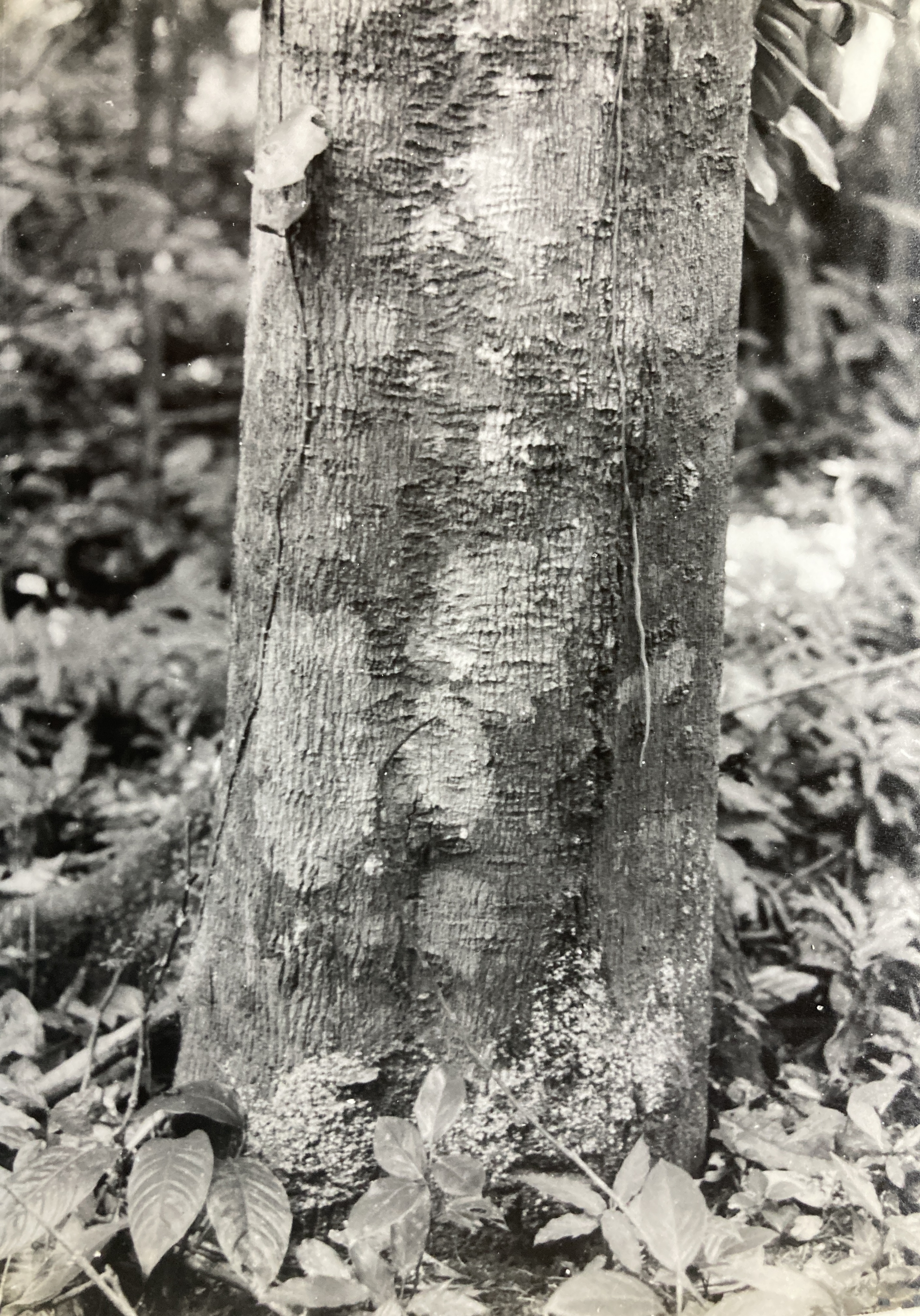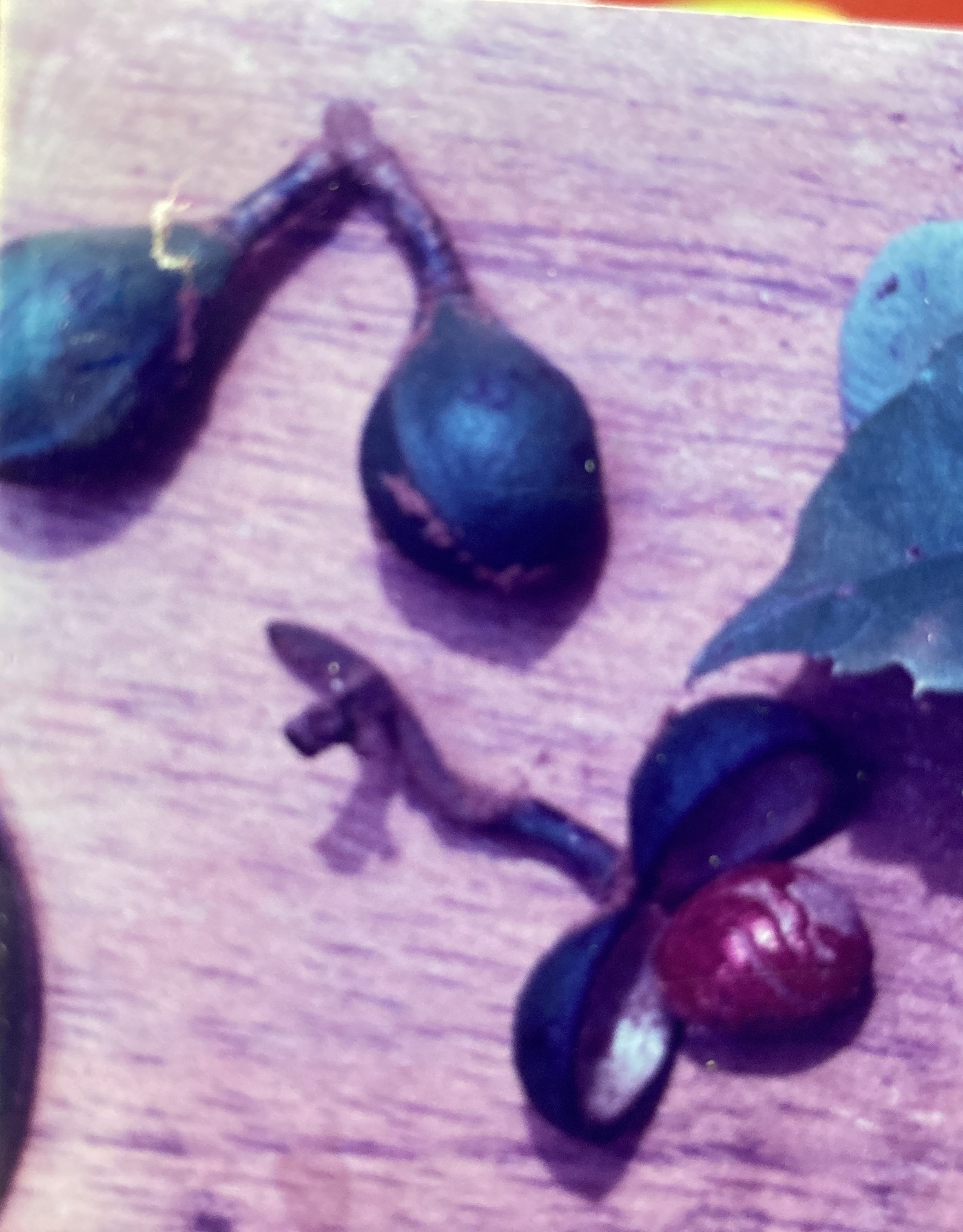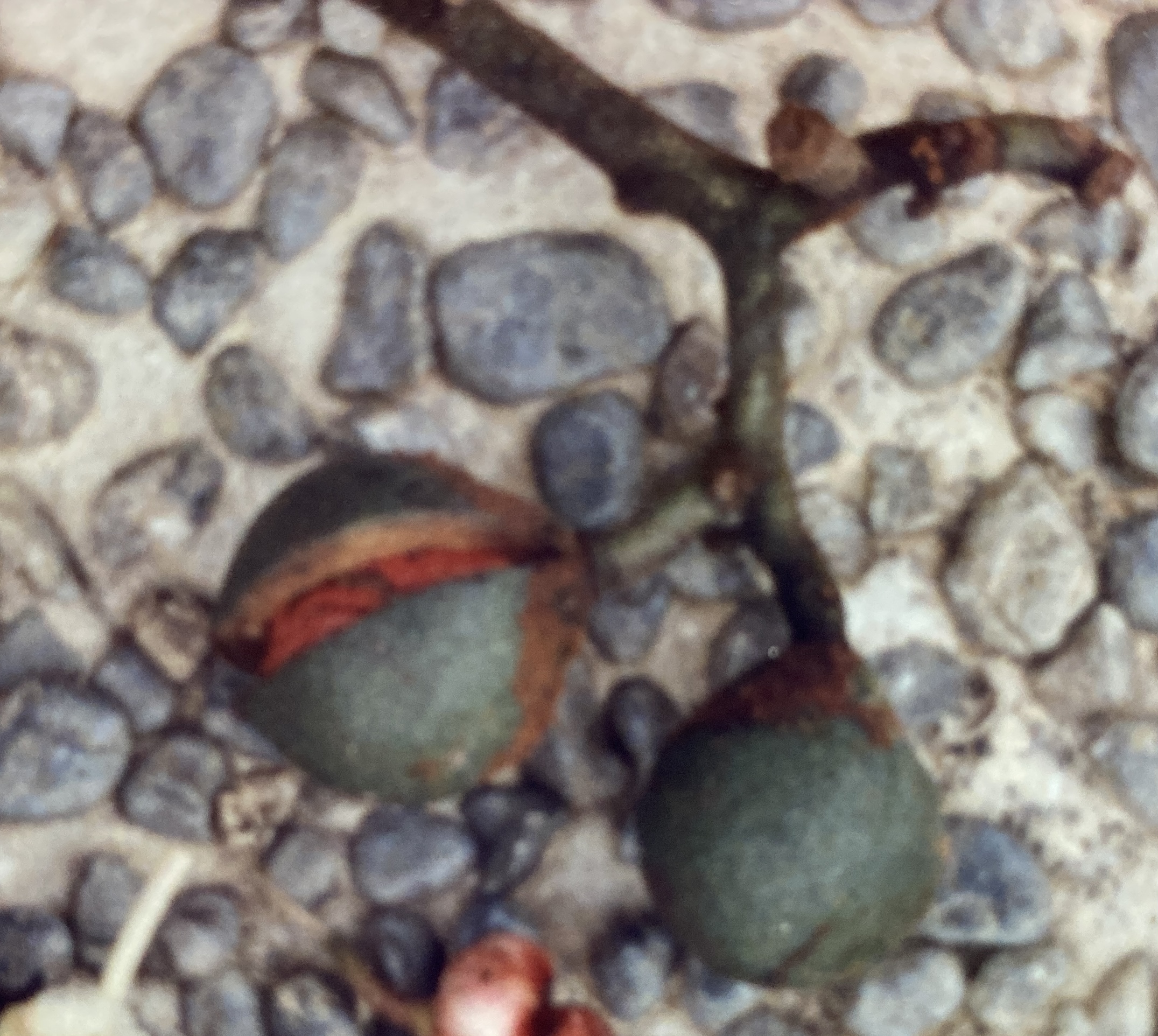Virola sebifera Aubl.
Myristicaceae
FRUTA DORADA
Common evergreen understory (occasionally subcanopy) tree (10-20 m) found thriving in the diminished light regimes characteristic of the lower levels of the primary rainforest. A member of the primitive and tropical Virola genus (see Virola koschnyi), this tree is relatively slight in bulk though equally open in form. Attractive, net-like red arils surround Virola seeds and provide an important source of forage for wildlife around mid-year.
Description: Dwarfed by its close relative (Virola koschnyi), this species has a straight, cylindrical trunk that rarely exceeds 20 cm in diameter. Young trees possess smooth, dark colored bark that is streaked with fine, vertical lenticels. Becoming lighter and rougher with age, Virola bark demonstrates a moderate degree of exfoliation in larger individuals. Elevated scars appear at periodic intervals along the unbranched portion of the monopodial bole, marking the positions of old limbs. Buttresses are absent. Very long, thin, horizontal branches emerge at right angles to the trunk, along the upper third of its length. With increasing distance from the bole, these highly flexible – even whip-like – branches droop under the weight of the foliage they support. These limbs create a narrow, relatively tall, thin crown with the pyramidal form typical of the genus. Leaves (2 by 6 cm) are simple and alternately arranged. Long and narrow, Virola blades retain the same width for most of their length, abruptly narrowing to drip tips only at their extreme distal ends. Rust-colored hairs cover the under surfaces of the leaves and are especially thick on the petioles (1 cm) as well as along the thin, zig-zagging twigs. Fruta Dorada undergoes a long period of active growth and leaf production beginning in August and lasting through December, when flower buds first appear. Flowers are generated in dense, rust-colored, axillar panicles. Restricted to positions located roughly two-thirds along the length of the branches, these tawny colored inflorescences can be difficult to see amid the foliage.
Virola sebifera is a dioecious species and its unisexual, male and female flowers are quite similar in form. Plain, petalless, and hairy, the curved, brown blossoms measure only 2 mm in diameter and carry four lackluster sepals. They emit a faint, citrus-like aroma. Flowering periods are annual, well synchronized and very regular, with the first blossoms opening in February and the last in June.
Immature fruits (2 cm) appear as early as April. They eventually develop into velvety, rust-colored, and nearly spherical capsules (or dehiscent berries) arranged in clusters. Often hidden amid the foliage, these panicles are located below the branches and about two-thirds of a branch length away from the bole. Splitting longitudinally, the two equal capsule valves separate and reveal a single, round, grooved seed covered with a stringy, scarlet-red aril. Fruiting occurs annually, in October and November, and harvests are variable is size.
Similar Species: Virola sebifera‘s aforementioned sister species, Virola koschnyi has a similar growth pattern and leaf structure. Nevertheless, it is a much taller (canopy) and more massive tree, and it is not likely to cause confusion with this species. Lacmellea panamensis is another understory tree with similarly shaped leaves, however its foliage is oppositely arranged. Also, Lacmellea‘s trunk is covered with conspicuous, large, thick-based thorns.
Natural History: Virola sebifera flowers are pollinated by insects. Fruits are foraged and seeds dispersed by large birds and arboreal mammals. Croat (1978) specifically mentions white-faced, howler, and spider monkeys – as well as Trogons and Motmots – as active consumers of V. sebifera seed arils.
Uses: Allen (1956) refers to the high fat content of Virola seeds and cites their use by native Panamanians for illumination. Seeds were skewered on a splinter and then burnt. He also says that the wood is pale brown and easy to work, but is mainly used for boxes, plywood, concrete forms, and the like.
Distribution: In Manuel Antonio National Park (MANP), V. sebifera is found in all primary forest habitats. This species is not a common road or trail-side tree. It ranges from Nicaragua to Peru, Bolivia, and Brazil (Croat, 1978).




